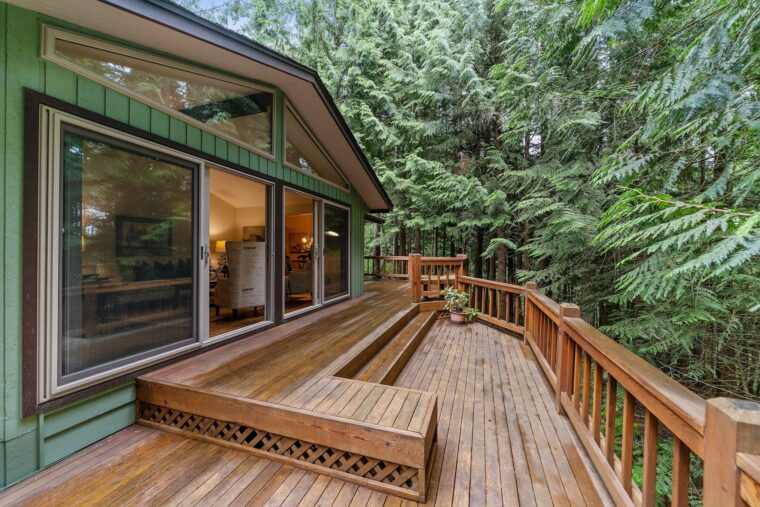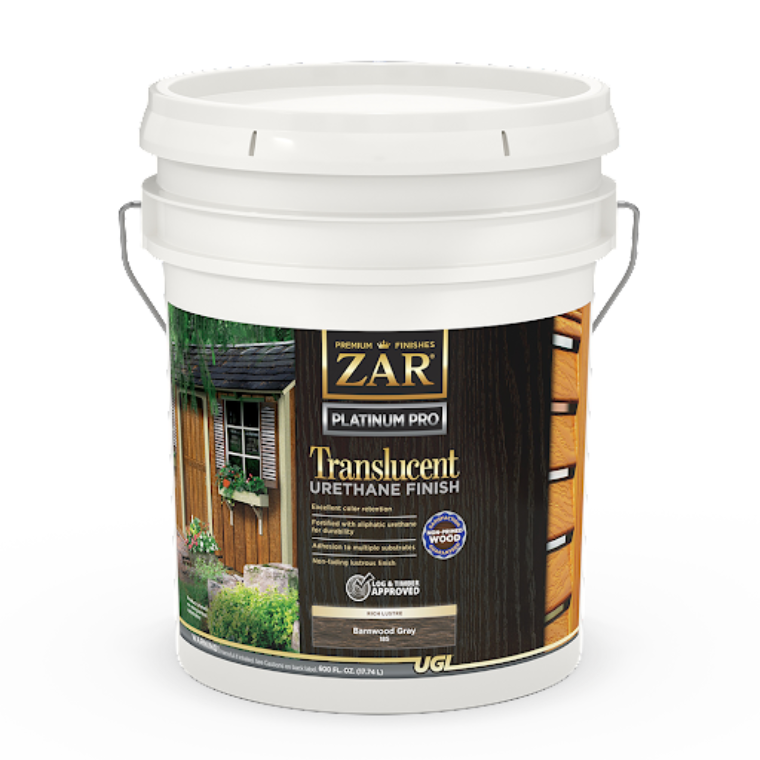
Achieving a beautiful stain finish on a composite surface doesn’t have to be difficult if you follow some simple recommendations. In this article, we will discuss how to prepare your composite surface for staining, what type of stain is best for these surfaces, which tools are necessary for a successful job as well as step-by-step instructions on how to get professional-looking results when staining your composite surface using ZAR® products.
What is a Composite Surface?
A composite surface is made up of two or more materials that, when blended, come together to form a unique material that contains properties not found in the individual components. These surfaces can be natural materials like wood, stone and metal, or synthetic materials such as plastics and other polymers.
The combination of these components results in a surface that is durable and resistant to weathering. In exterior building materials, you’ll find composites in fiber cement siding, decking and trim products.
How to Stain a Composite Surface

Staining a composite surface is as simple as any other staining project. In this section, we will discuss what steps to take as well as some tips that will help you achieve a professional finish.
Preparing the Surface
Composite surfaces need to be properly prepared because they will not absorb stains as well as other porous materials. If not properly prepped, you could end up with an uneven or patchy look once it’s stained. To ensure that the surfaces are ready for staining, it is essential to clean them thoroughly and sand down any uneven spots.
Proper preparation will help ensure that the stain won’t fade prematurely or chip off easily due to inadequate adhesion:
The surface must be spotless and dry.
All dirt, wood fragments, paint chips, oil or grease must be removed.
Any loose boards which may have become warped or cracked should either be fixed or replaced entirely.
If mold or mildew is present on the composite surface, natural cleaning solutions are recommended.
For best results, make sure that your deck is dry before you begin. Wear protective gear such as gloves and goggles, if necessary.
In a bucket or container, mix one tablespoon of dishwashing detergent with 1⁄4 gallon of warm tap water to create a cleaning solution for the affected area.
Gently scrub using either an old toothbrush or soft-bristled brush until all traces of mold have been eliminated.
Wipe off any excess liquid with a clean rag after scrubbing.
Spray down the area with undiluted vinegar.
Allow the vinegar to sit for an hour before wiping away again with another dry cloth.
DO NOT use pressure washers as they may cause damage!
Choosing the Right Stain
When choosing a stain for your composite surface, it is essential to pick one with excellent performance qualities. ZAR’s innovative formula includes self-crosslinking Core-Shell Technology for higher performance standards with increased adhesion, weather ability and color retention. It is also fortified with aliphatic urethane for increased durability.
Translucent Finish

In contrast to opaque stains that conceal the grain of the composite decking or siding, translucent stains enhance their natural beauty by exposing the unique texture and pattern. Many composite products are manufactured with a natural wood grain appearance that you may want to highlight rather than cover with a solid stain.
Solid Color Stain

Solid stains are an excellent choice for composite surfaces because they offer better coverage and more vibrant colors. Unlike translucent stains, solid stains provide a layer of protection that helps reduce sun damage and fading over time, while also allowing the natural texture of the surface to be visible. Fortunately, a solid stain can easily be touched up or changed without having to strip the old color off first.
Applying the Stain

Always be sure to follow the manufacturer’s instructions for the specific product you are using.
ZAR Platinum PRO Translucent Exterior Urethane
For best results, only apply when air and surface temperatures are above 50°F (10°C). Do not thin out the product — simply stir thoroughly before and during use. Keep in mind that applying ZAR Platinum PRO Translucent Exterior Urethane Finish if rain is forecasted within 24 hours will yield unsatisfactory results.
Keep away from direct sunlight while completing the application process in order to ensure the best color outcome.
ZAR Platinum PRO Translucent Exterior Urethane Finish has been formulated to be applied in one coat only. If you would like a deeper color, simply apply another layer of the finish for ideal results!
ZAR Deck & Siding Solid Color Coating
Utilize a brush, roller, foam pad applicator, or spray to apply the paint when temperatures are between 40°F (40°C) and 95°F(35°C). Be sure to stir well before applying as well as throughout the process.
If spraying, it is recommended that you dry brush or back roll for even coloration. It’s important to avoid direct sunlight exposure while painting with two coats of the product and to maintain a wet edge during application. Keep in mind that this coating should not be thinned nor applied if rain is expected within 24 hours.
Finishing the Surface
Apply a Clear Sealer
Applying a clear sealer after staining is important for several reasons:
Protection: A clear sealer acts as a barrier to protect the stain from external factors such as moisture, UV rays and other elements that can cause fading or discoloration.
Durability: The clear sealer helps to extend the life of the stain and preserve its appearance over time. This is especially important for outdoor projects where the elements can be harsh and abrasive.
Enhanced Color: The clear sealer can help to enhance the color of the stain, making it more vibrant and rich. This is because it helps to lock in the pigments to prevent them from fading or washing out.
Easy Maintenance: A clear sealer makes it easier to clean and maintain the surface of the project. The sealer provides a smooth and even surface that is resistant to dirt and grime, which makes it easier to clean.
The Best Sealer for Composite Material
ZAR Platinum Pro Clear Coat is a specifically designed aliphatic urethane that reinforces color protection and resistance to extreme weather on wood and composite siding products. Utilizing advanced technology, it bonds strongly with ZAR Platinum Pro Translucent Urethane Finish for superior results.
Stain a Composite Surface Properly with ZAR
The right stain can make a huge difference when it comes to the appearance of your composite surface. ZAR products will help you easily achieve stunning results with minimal effort. Our Platinum Pro Translucent Exterior Urethane Finish is easy to apply and provides superior color protection that lasts for years, and our new Deck & Siding Solid Color Coating provides a rich, even color that won’t wash away in the rain.
If you’re looking to give your composite surface a makeover, look no further than ZAR. Contact us today to find a retail store near you!



